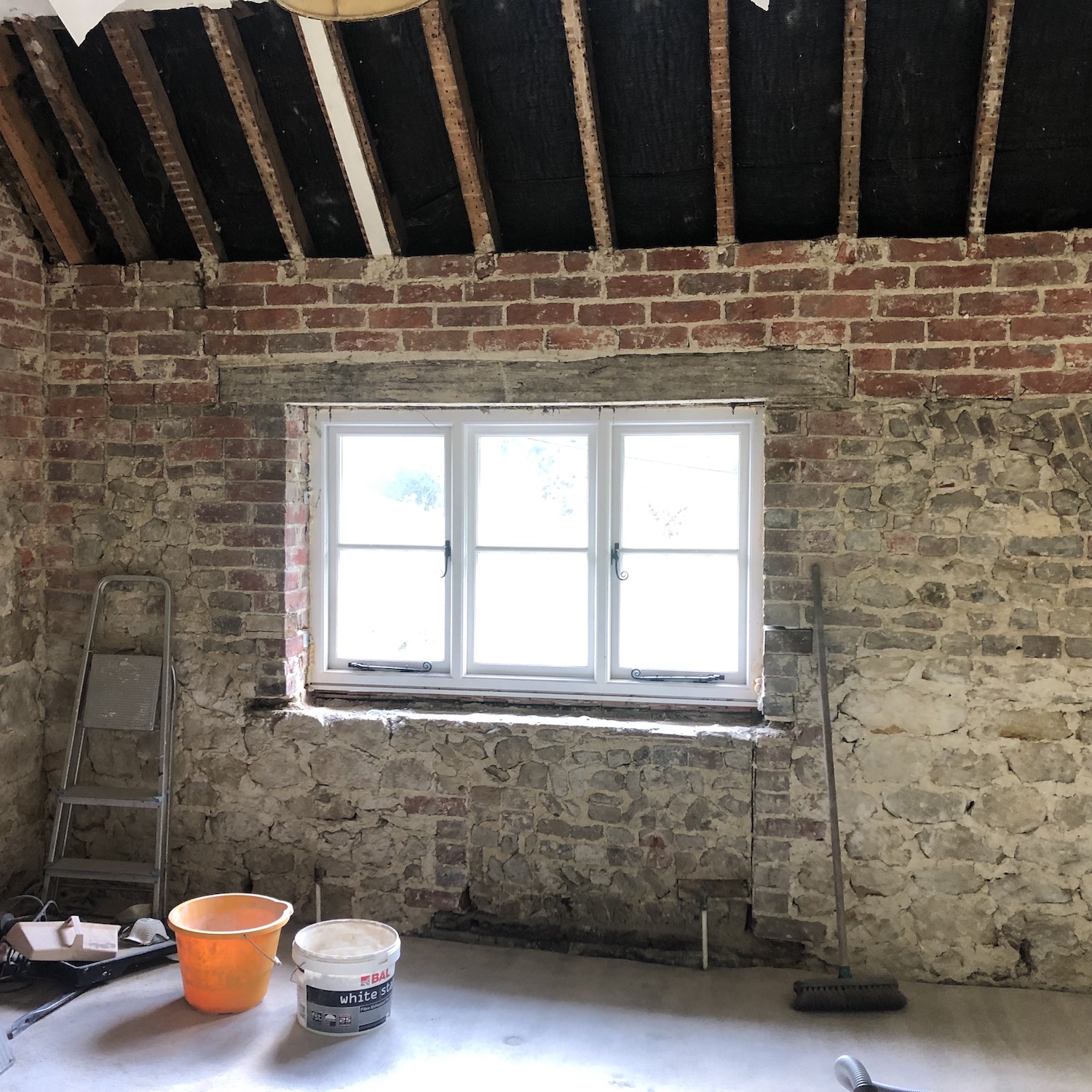#Howto _Exposed Stone Feature Wall: 1/2
Having moved into our little stone farmhouse almost two years ago, we’ve been holding back on the renovation work until we had a clear plan. The house is around 300 years old, and therefore comes with a whole host of challenges, not to mention rising damp and a nasty smell!
Having spent a couple of winters in a freezing cold bedroom, I decided to give one of the other rooms which had just had double glazing fitted a ‘lick of paint’ so we could move in for the winter. Now that, I thought, was a good plan. Feeling ‘curious’ about what may lie beneath the plasterwork, a piece just happened to 'fall off' (read 'helped' off) to expose the most beautiful Midhurst stone, brick quoining and a lovely wooden lintel.
(I should mention that several conversations between my husband and I followed about my understanding of the phrase 'lick of paint')

… cut to: Exposed Stone Feature Walls…
Having fallen in love with our new/old feature wall, I decided to send myself off on a course to learn how to repoint the stone and brick using lime.
A traditional material, lime is permeable, and therefore allows buildings to breath, reducing the risk of trapped moisture and subsequent damage to the fabric of the building. Lime plasters have porous and open textures which help to stabilise the internal humidity of a building by absorbing moisture. This reduces surface condensation and mould growth.
With research, I found a company in Winchester, which specialises in lime products. Nigel the owner, spent a couple of hours patiently showing me how to mix the mortar to the right consistency, explaining how to achieve the right colour, and most importantly, how to do repointing. Not known for my patience, this is a skill (or rather, I should say 'a craft') which requires it in bucket loads! However, it was remarkably satisfying to see the end result, and I am now itching to get started on the bedroom wall.
As an interior designer, understanding old houses and their construction is important, especially when it comes to major renovations. You can never be quite sure what you will uncover, but these old homes are living and breathing. Using the right materials for the job is important to let them continue to breath, even down to the type of insulation, plaster and paint you choose.
Tune in for part two of this journal post, when I plan on sharing the process of cleaning and repointing my feature wall in a little more detail and of course some images of the end result, hopefully sometime before Christmas (2019).
